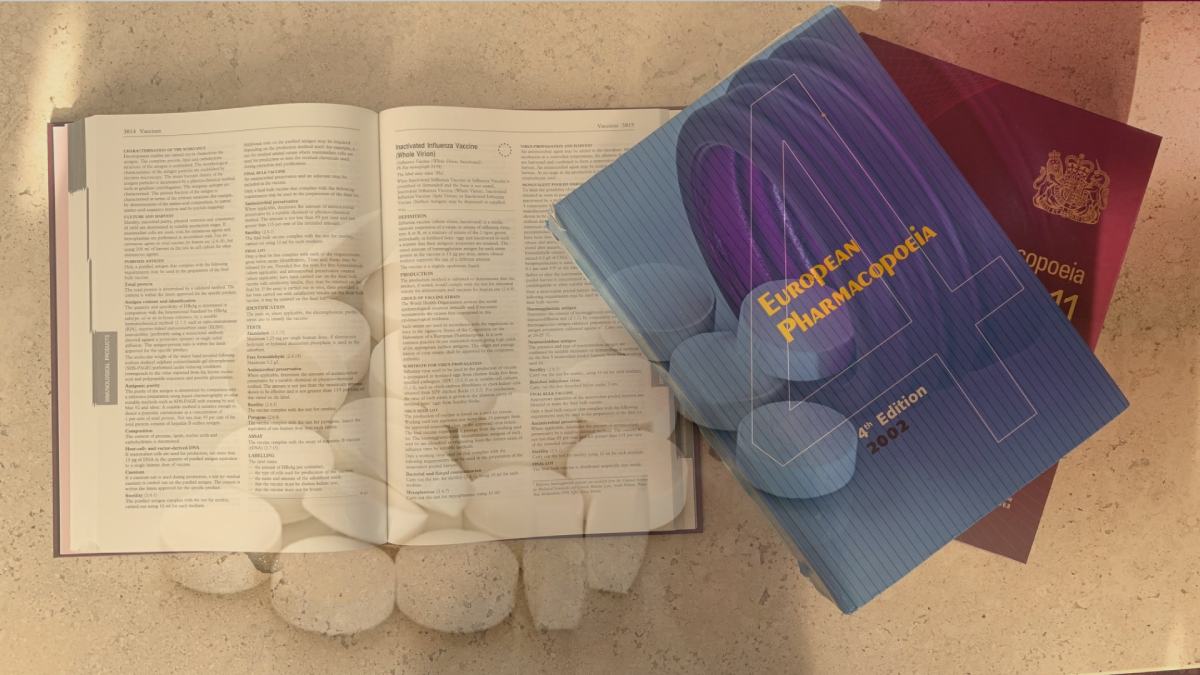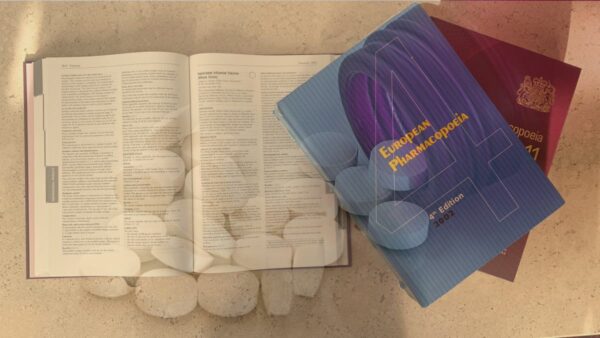The United States Pharmacopeia (or to give it its full name, The United States Pharmacopoeia and the National Formulary (USP–NF) is a pharmacopoeia published by the United States Pharmacopoeial Convention. It is the official compendia of the United States of America.
The USP-NF contains monographs and standards for medicines, finished dosage forms, active drug substances, excipients, biologics, compounded preparations, medical devices, dietary supplements, and many other therapeutic goods intended for use in healthcare.
The United States Pharmacopeial Convention (confusingly also called the USP) is the non-profit organization that owns the trademark and copyright to the USP-NF. It is charged with the responsibility for publishing the USP-NF and managing the process of developing official monographs as well as availing official reference standards.
The USP-NF does not enforce any laws – it merely carries official standards developed by the United States Pharmacopoeial Convention for medical articles manufactured and marketed in the United States. Enforcement is caried out by the U.S. Food and Drug Administration (FDA).
History of the United States Pharmacopoeia
The United States Pharmacopeia traces its origins to the early part of the 19th century. The War of Independence (1775-1783) had exposed the inadequacy of existing standards in controlling medicines required to meet the needs of American military hospitals.
Leading physicians of the time begun collating information on medicinal products and organising it into dispensatories and pharmacopoeias. In 1820, a group of 11 physicians met at the US Capitol in Washington DC, the result of which was the creation of the first United States Pharmacopeia (published as The Pharmacopoeia of The United States of America).
The first editions were very basic, and aimed only to serve as “authoritative” resources for the public to consult. They included a few hundred products that were deemed well understood and characterised at the time.
In 1848, the US Congress passed the Drug Importation Act in response to public outcry about imported patent medicines from Europe, which many felt substandard. This act recognised the United States Pharmacopeia as the official compendia for the United States of America.
Independently of the United States Pharmacopeia, the American Pharmaceutical Association established the National Formulary (NF) in 1888. The NF principally aimed to serve as a resource and a formulary for small-scale compounding of medicines.
In 1906, the Pure Food and Drugs Act further codified the United States Pharmacopeia and National Formulary standards, recognising both compendia for product strength, quality and purity. Subsequent legislation, including the 1938 Federal Food, Drug and Cosmetic Act, further cemented the role of these compendia in standardisation of quality of medicines in US commerce.
In 1975, the United States Pharmacopoeial Convention purchased the right to the National Formulary, bringing together the two compendia under one roof, thus creating the United States Pharmacopoeia-National Formulary that we know today.
Organisation of the United States Pharmacopoeia
Over the years, the USP-NF has evolved, not just in terms of national and international recognition but also in the scope of the information it covers.
Now in its 43rd edition (from May 2021), the current USP-NF remains true to its original mandate: to be an accessible source of information for quality of prescription, nonprescription, and compounded medicines; excipients; biologics; medical devices; and dietary supplements.
Actives are generally featured in the United State Pharmacopoeia section while excipients appear in the National Formulary. If an excipient is also used as an active it will be featured in the United States Pharmacopeia section.
It features close to 5000 monographs, of which there are around 1500 monographs for active ingredients, 450 for excipients, and over 2500 for finished dosage forms.
In addition to monographs, the USP-NF also features 350 “General Chapters” sections, which covers information on assays, tests, and procedures used in monographs.
Available Formats
The print version of the USP-NF is no longer available. The only available format now is online via a subscription.
The online format is highly convenient not only because of the convenience of access but any updates are automatically posted.
The online format also offers improved search functionalities, and moreover you can set alerts as well as bookmarks for pages of interest.
Subscriber Resources
References
Brinckmann R. M et al (2020). Quality Standards for Botanicals — Legacy of USP’s 200 Years of Contributions. HerbalGram (American Botanical Society) 126: 50-65. Accessed 10.11.2021.






